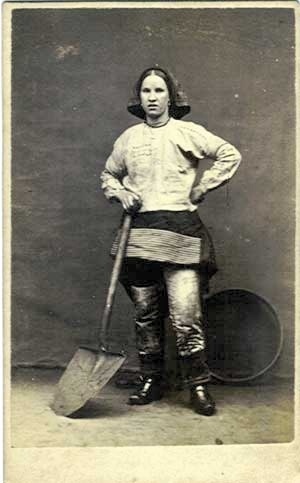Mirella Sichirollo Patzer's Blog, page 49
November 17, 2011
Cecily Neville - Thwarted Queen by Cynthia Haggard
An indepth historical biographical novel of Cecily Neville
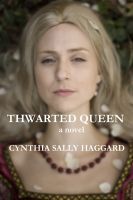
Synopsis
THWARTED QUEEN is a portrait of a woman trapped by power, a marriage undone by betrayal, and a King brought down by fear.
Cecylee is the apple of her mother's eye. The seventh daughter, she is the only one left unmarried by 1424, the year she turns nine. In her father's eyes, however, she is merely a valuable pawn in the game of marriage. The Earl of Westmorland plans to marry his youngest daughter to 13-year-old Richard, Duke of York, who is close to the throne. He wants this splendid match to take place so badly, he locks his daughter up.
The event that fuels the narrative is Cecylee's encounter with Blaybourne, a handsome archer, when she is twenty-six years old. This love affair produces a child (the "One Seed" of Book II), who becomes King Edward IV. But how does a public figure like Cecylee, whose position depends upon the goodwill of her husband, carry off such an affair? The duke could have locked her up, or disposed of this illegitimate son.
But Richard does neither, keeping her firmly by his side as he tries to make his voice heard in the tumultuous years that encompass the end of the Hundred Years War - during which England loses all of her possessions in France - and the opening phase of the Wars of the Roses. He inherits the political mantle of his mentor Duke Humphrey of Gloucester, and become's the people's champion. The rambunctious Londoners are unhappy that their country has become mired in misrule due to the ineptitude of a King prone to fits of madness. Nor are they better pleased by the attempts of the King's French wife to maneuver herself into power, especially as she was responsible for England's losses in France. But can Richard and Cecylee prevail? Everywhere, their enemies lurk in the shadows.
This book is filled with many voices, not least those of the Londoners, who forged their political destiny by engaging in public debate with the powerful aristocrats of the time. By their courageous acts, these fifteenth-century Londoners set the stage for American Democracy.
Review
Thwarted Queen is a young adult novel about Cecylee (Cecily) Neville, mother to kings of England. The author did an exceptional job of portraying Cecily as strong and determined woman, unafraid to speak her mind and take risks. Although fettered by the restrictions of her era, Cecily made the most of her marriage to Richard Plantagenet, Duke of York. As she and her family becomes caught in the life and death struggles between two families vying for the throne of England, she initiates her own battles. The strong, first person narrative author, immediately engages the reader. It is evident that author Cynthia Haggard did extensive research into the life of this fascinating woman and has more novels forthcoming. A wonderful novel to introdcuce Cecily Neville and historical biographical fiction to young female readers.
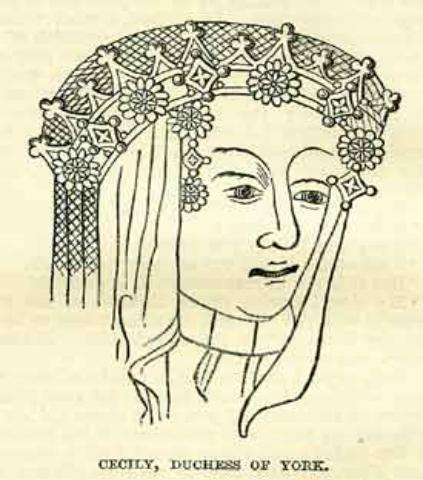
Cecily Neville was at the very top of the social scale in late medieval England, and held the highest status a woman could enjoy. She was the eighteenth child of Ralph, first Earl of Westmorland and Joan Beaufort, daughter of John of Gaunt. Her marriage to Richard Plantagenet, Duke of York, was a suitable match between two families of great status.
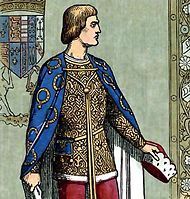 Richard PlantagenetDuke of York
Richard PlantagenetDuke of York
Besides wielding considerable political power in an age when few women did so, Cecily administered a large feudal estate, with all the interlocking duties and responsibilities, which that entailed.
Given her high rank, Cecily Neville might have been constrained by the conventional medieval noblewoman's life of piety, patronage, courtly attendance and quiet support for her husband. But she certainly did not heed the advice of the author of The Goodman of Paris (1393), a treatise on household management, who advised that to satisfy their husbands young wives should behave like faithful dogs.
Cecily was a great beauty and indulged in the luxurious lifestyle that her marriage to the wealthiest peer of the realm allowed. She also supported her husband's actions in claiming the crown at the end of the 1450s, and moved beyond the expected behaviour of contemporary noblewomen when she became directly involved in political events.
This trend continued after her husband was killed during the battle of Wakefield in December 1460. Cecily's eldest son, Edward, Earl of March, became King Edward IV in 1461.
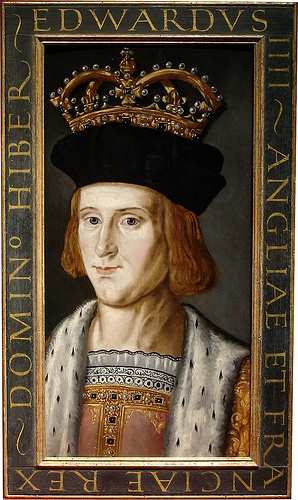
King Edward IV
Cecily soon received confirmation of her lands and rights, and as a widow with enormous personal wealth, she continued her patronage of religious houses and the college founded by her husband at Fotheringhay, in Northamptonshire. Cecily also adopted the role of Yorkist matriarch. After 1461, her main goal became the arrangement of a suitable marriage for the king. When in May 1464 he secretly married a low-born widow, Elizabeth Woodville, instead of a European princess, Cecily reacted angrily and refused to subordinate herself to the new queen, styling herself 'queen by right'.
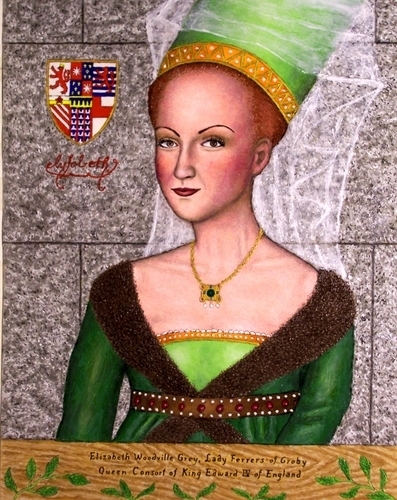 Elizabeth Woodville
Elizabeth Woodville
By marrying Elizabeth Woodville, Edward also alienated Cecily's powerful nephew Richard, Earl of Warwick, known as the 'Kingmaker', who had been conducting negotiations with the French king for Edward's marriage. There is evidence that by 1469 Cecily had declared Edward to be illegitimate and, with Warwick, was pushing for the crown to pass to her second son, George, Duke of Clarence.
 George PlantagentDuke of Clarence
George PlantagentDuke of Clarence
This development permanently damaged her relationship with Edward, so from 1471 until after his death in April 1483 she avoided the royal court and concentrated on her private interests.
When Edward died, Cecily revived her kingmaking activities. By this time her sense of dynasty was even more acute. Clarence had been attainted by the king and had died in mysterious circumstances in the Tower of London in 1478. Cecily therefore now acted decisively to restore the true Yorkist line through her youngest son, Richard, Duke of Gloucester, who in 1483 became Richard III.
 Richard IIIDuke of Gloucester
Richard IIIDuke of Gloucester
In support of Richard's claim to the throne, Cecily held a meeting at her London home to nullify Edward's will, and supported the assertion that his sons - the 'Princes in the Tower' - were illegitimate and so could not rule if the Yorkist dynasty was to remain pure.
Subsequently, in August 1485, Richard was defeated by Henry Tudor at Bosworth Field and died during the course of the battle. With Henry firmly installed as King Henry VII, the 70-year-old duchess gave the impression of finally accepting defeat.

Henry VII
Nevertheless, there is evidence that after her death in 1495 many of her servants were involved in the conspiracy to dethrone Henry VII hatched by Perkin Warbeck (who claimed to be the younger of the two princes murdered in the Tower). Cecily's life and intrigues show that women could enjoy considerable influence in the masculine world of medieval politics, as well as in more conventional female roles.
The above article is was taken from the National Archives
I LOVE COMMENTS











Synopsis
THWARTED QUEEN is a portrait of a woman trapped by power, a marriage undone by betrayal, and a King brought down by fear.
Cecylee is the apple of her mother's eye. The seventh daughter, she is the only one left unmarried by 1424, the year she turns nine. In her father's eyes, however, she is merely a valuable pawn in the game of marriage. The Earl of Westmorland plans to marry his youngest daughter to 13-year-old Richard, Duke of York, who is close to the throne. He wants this splendid match to take place so badly, he locks his daughter up.
The event that fuels the narrative is Cecylee's encounter with Blaybourne, a handsome archer, when she is twenty-six years old. This love affair produces a child (the "One Seed" of Book II), who becomes King Edward IV. But how does a public figure like Cecylee, whose position depends upon the goodwill of her husband, carry off such an affair? The duke could have locked her up, or disposed of this illegitimate son.
But Richard does neither, keeping her firmly by his side as he tries to make his voice heard in the tumultuous years that encompass the end of the Hundred Years War - during which England loses all of her possessions in France - and the opening phase of the Wars of the Roses. He inherits the political mantle of his mentor Duke Humphrey of Gloucester, and become's the people's champion. The rambunctious Londoners are unhappy that their country has become mired in misrule due to the ineptitude of a King prone to fits of madness. Nor are they better pleased by the attempts of the King's French wife to maneuver herself into power, especially as she was responsible for England's losses in France. But can Richard and Cecylee prevail? Everywhere, their enemies lurk in the shadows.
This book is filled with many voices, not least those of the Londoners, who forged their political destiny by engaging in public debate with the powerful aristocrats of the time. By their courageous acts, these fifteenth-century Londoners set the stage for American Democracy.
Review
Thwarted Queen is a young adult novel about Cecylee (Cecily) Neville, mother to kings of England. The author did an exceptional job of portraying Cecily as strong and determined woman, unafraid to speak her mind and take risks. Although fettered by the restrictions of her era, Cecily made the most of her marriage to Richard Plantagenet, Duke of York. As she and her family becomes caught in the life and death struggles between two families vying for the throne of England, she initiates her own battles. The strong, first person narrative author, immediately engages the reader. It is evident that author Cynthia Haggard did extensive research into the life of this fascinating woman and has more novels forthcoming. A wonderful novel to introdcuce Cecily Neville and historical biographical fiction to young female readers.

Cecily Neville was at the very top of the social scale in late medieval England, and held the highest status a woman could enjoy. She was the eighteenth child of Ralph, first Earl of Westmorland and Joan Beaufort, daughter of John of Gaunt. Her marriage to Richard Plantagenet, Duke of York, was a suitable match between two families of great status.
 Richard PlantagenetDuke of York
Richard PlantagenetDuke of YorkBesides wielding considerable political power in an age when few women did so, Cecily administered a large feudal estate, with all the interlocking duties and responsibilities, which that entailed.
Given her high rank, Cecily Neville might have been constrained by the conventional medieval noblewoman's life of piety, patronage, courtly attendance and quiet support for her husband. But she certainly did not heed the advice of the author of The Goodman of Paris (1393), a treatise on household management, who advised that to satisfy their husbands young wives should behave like faithful dogs.
Cecily was a great beauty and indulged in the luxurious lifestyle that her marriage to the wealthiest peer of the realm allowed. She also supported her husband's actions in claiming the crown at the end of the 1450s, and moved beyond the expected behaviour of contemporary noblewomen when she became directly involved in political events.
This trend continued after her husband was killed during the battle of Wakefield in December 1460. Cecily's eldest son, Edward, Earl of March, became King Edward IV in 1461.

King Edward IV
Cecily soon received confirmation of her lands and rights, and as a widow with enormous personal wealth, she continued her patronage of religious houses and the college founded by her husband at Fotheringhay, in Northamptonshire. Cecily also adopted the role of Yorkist matriarch. After 1461, her main goal became the arrangement of a suitable marriage for the king. When in May 1464 he secretly married a low-born widow, Elizabeth Woodville, instead of a European princess, Cecily reacted angrily and refused to subordinate herself to the new queen, styling herself 'queen by right'.
 Elizabeth Woodville
Elizabeth WoodvilleBy marrying Elizabeth Woodville, Edward also alienated Cecily's powerful nephew Richard, Earl of Warwick, known as the 'Kingmaker', who had been conducting negotiations with the French king for Edward's marriage. There is evidence that by 1469 Cecily had declared Edward to be illegitimate and, with Warwick, was pushing for the crown to pass to her second son, George, Duke of Clarence.
 George PlantagentDuke of Clarence
George PlantagentDuke of ClarenceThis development permanently damaged her relationship with Edward, so from 1471 until after his death in April 1483 she avoided the royal court and concentrated on her private interests.
When Edward died, Cecily revived her kingmaking activities. By this time her sense of dynasty was even more acute. Clarence had been attainted by the king and had died in mysterious circumstances in the Tower of London in 1478. Cecily therefore now acted decisively to restore the true Yorkist line through her youngest son, Richard, Duke of Gloucester, who in 1483 became Richard III.
 Richard IIIDuke of Gloucester
Richard IIIDuke of GloucesterIn support of Richard's claim to the throne, Cecily held a meeting at her London home to nullify Edward's will, and supported the assertion that his sons - the 'Princes in the Tower' - were illegitimate and so could not rule if the Yorkist dynasty was to remain pure.
Subsequently, in August 1485, Richard was defeated by Henry Tudor at Bosworth Field and died during the course of the battle. With Henry firmly installed as King Henry VII, the 70-year-old duchess gave the impression of finally accepting defeat.

Henry VII
Nevertheless, there is evidence that after her death in 1495 many of her servants were involved in the conspiracy to dethrone Henry VII hatched by Perkin Warbeck (who claimed to be the younger of the two princes murdered in the Tower). Cecily's life and intrigues show that women could enjoy considerable influence in the masculine world of medieval politics, as well as in more conventional female roles.
The above article is was taken from the National Archives
I LOVE COMMENTS










Published on November 17, 2011 16:06
November 16, 2011
The Lily and the Falcon by Jannine Corti-Petska
An engaging romance set in 15th century Florence
Bianca degli Albizzi is outraged when sworn enemy Cristiano de'Medici asks for her hand in marriage. With her father's blessing, she weds the handsome warrior to end the war between Florence's two powerful families. But headstrong Bianca vows to teach her husband that loyalty cannot be bought...not even by seduction. Cristiano, a well-known warrior with the wealth of a king, could have any woman he desires. But for the sake of peace he ends up with a defiant bride who awakens his deepest passion. Her vengeful scheming puts them both in peril, but is he prepared to sacrifice his life to safeguard the woman who has stolen his heart?
The Lily and the Falcon is the first of a four book historical romance series set in Italy. The author's fine prose immediately drew me into the story, and the Italian setting, intriguing characters, and endearing love story definitely kept me there reading.
First and foremost, this a historical romance set in the decadence of 15th century Florence. It is a story about two lovers, Bianca degli Albizzi and Cristiano de Medici who are required to marry in order to bring an end to the long-standing feud between their two families. But things are not all that they seem and trouble soon befalls the young couple, casting doubt on their motivations and growing feelings.
I love Italian historical fiction, and this novel satisfied me very well. The author is of a strong Italian background and it is evident she has spent considerable time in Italy. Her experiences added ambience and richness to the story, making the entire novel, from start to finish, authentically Italian. I could easily visualize the palazzo and sensual descriptions that really brought this novel to life.
Suspicion, betrayal, poisonings, passion, family loyalty, and a love that surpasses all expectation fills each highly descriptive page. Well worth checking out and recommended to anyone who loves stores set in the Italian Renaissance. I LOVE COMMENTS










Bianca degli Albizzi is outraged when sworn enemy Cristiano de'Medici asks for her hand in marriage. With her father's blessing, she weds the handsome warrior to end the war between Florence's two powerful families. But headstrong Bianca vows to teach her husband that loyalty cannot be bought...not even by seduction. Cristiano, a well-known warrior with the wealth of a king, could have any woman he desires. But for the sake of peace he ends up with a defiant bride who awakens his deepest passion. Her vengeful scheming puts them both in peril, but is he prepared to sacrifice his life to safeguard the woman who has stolen his heart?
The Lily and the Falcon is the first of a four book historical romance series set in Italy. The author's fine prose immediately drew me into the story, and the Italian setting, intriguing characters, and endearing love story definitely kept me there reading.
First and foremost, this a historical romance set in the decadence of 15th century Florence. It is a story about two lovers, Bianca degli Albizzi and Cristiano de Medici who are required to marry in order to bring an end to the long-standing feud between their two families. But things are not all that they seem and trouble soon befalls the young couple, casting doubt on their motivations and growing feelings.
I love Italian historical fiction, and this novel satisfied me very well. The author is of a strong Italian background and it is evident she has spent considerable time in Italy. Her experiences added ambience and richness to the story, making the entire novel, from start to finish, authentically Italian. I could easily visualize the palazzo and sensual descriptions that really brought this novel to life.
Suspicion, betrayal, poisonings, passion, family loyalty, and a love that surpasses all expectation fills each highly descriptive page. Well worth checking out and recommended to anyone who loves stores set in the Italian Renaissance. I LOVE COMMENTS










Published on November 16, 2011 12:42
November 12, 2011
Once A Goddess by Sheila R. Lamb
A compelling novel of Ancient Ireland
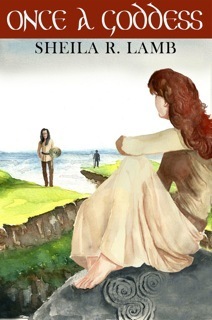
Two tribes battle for control of ancient Ireland, and Brigid must find her place among them, trapped between the will of her people and the desires of her heart.
For the sake of peace, Brigid of the supernatural Túatha dé Danann enters into an arranged marriage with Bres, the next chieftain of the enemy Fomorian tribe, whose iron weapons and brute strength challenge the Danann magic. The Danann instruct Brigid to spy for them, and to keep the source of their powers secret, dangerous tasks that complicate her goal of making the best of her forced union. Sacrificing her own hope for love, Brigid faces the Fomorians alone. She must confront her rival, Morrigan, who competes for Bres's affections, as she begins to suspect that he is breaking the truce through lies and political manipulation. When his tyranny threatens the very existence of the Danann, Brigid must risk her life to unseat Bres from power.
Set in a time when myths were reality, Once A Goddess brings the legend of Ireland's magical Túatha dé Danann to life.
I enjoy historical fiction because a story can sweep me into foreign lands and eras in the past I know little about. Once A Goddess, by Sheila R. Lamb introduces to three sets people named the Túatha dé Danann, the Fomorians, and the Fir Bolgs in ancient, mythological Ireland.
From the moment I began reading, the rich prose set a vivid picture and endeared me to Brigid, a young woman obligated to marry Bres, the future chief of an enemy tribe, in order to keep peace between them. But she is expected to spy and report findings to her village leaders. As she adjusts to the foreign ways of her new village, Bres is a good husband. But soon, dark secrets arise to threaten their peace. Thrust into a near impossible situations, Brigid must make some hard choices, and it is this, in addition to the tantalizing way in which the author reveals the secrets, that drives the story.
Unrequited love, passionate liaisons, lies and deception, treachery and betrayal line this novels pages. It is an emotionally provocative and compelling story and I enjoyed the exotic setting and adventure this story offers. A unique book worth reading and highly recommended.
I LOVE COMMENTS











Two tribes battle for control of ancient Ireland, and Brigid must find her place among them, trapped between the will of her people and the desires of her heart.
For the sake of peace, Brigid of the supernatural Túatha dé Danann enters into an arranged marriage with Bres, the next chieftain of the enemy Fomorian tribe, whose iron weapons and brute strength challenge the Danann magic. The Danann instruct Brigid to spy for them, and to keep the source of their powers secret, dangerous tasks that complicate her goal of making the best of her forced union. Sacrificing her own hope for love, Brigid faces the Fomorians alone. She must confront her rival, Morrigan, who competes for Bres's affections, as she begins to suspect that he is breaking the truce through lies and political manipulation. When his tyranny threatens the very existence of the Danann, Brigid must risk her life to unseat Bres from power.
Set in a time when myths were reality, Once A Goddess brings the legend of Ireland's magical Túatha dé Danann to life.
I enjoy historical fiction because a story can sweep me into foreign lands and eras in the past I know little about. Once A Goddess, by Sheila R. Lamb introduces to three sets people named the Túatha dé Danann, the Fomorians, and the Fir Bolgs in ancient, mythological Ireland.
From the moment I began reading, the rich prose set a vivid picture and endeared me to Brigid, a young woman obligated to marry Bres, the future chief of an enemy tribe, in order to keep peace between them. But she is expected to spy and report findings to her village leaders. As she adjusts to the foreign ways of her new village, Bres is a good husband. But soon, dark secrets arise to threaten their peace. Thrust into a near impossible situations, Brigid must make some hard choices, and it is this, in addition to the tantalizing way in which the author reveals the secrets, that drives the story.
Unrequited love, passionate liaisons, lies and deception, treachery and betrayal line this novels pages. It is an emotionally provocative and compelling story and I enjoyed the exotic setting and adventure this story offers. A unique book worth reading and highly recommended.
I LOVE COMMENTS










Published on November 12, 2011 12:25
November 9, 2011
The Highway of Heroes - A Tribute
The Canadian Highway of Heroes - A tribute to all our military loved ones
Here in Canada, when one of our beloved soldiers pays the ultimate sacrifice, he or she is carried from the airport to the military base along a stretch of highway from Trenton, Ontario to Toronto, Ontario. No matter the weather, even in sub zero storms, men, women, and children will line this route to pay tribute and pray for their fallen heroes on their way to their final resting place. The road has now been officially renamed as The Highway Of Heroes. May God Bless our Soldiers and their families for their sacrifice.
There is a heart-wrenching song that is being aired on radio stations across Canada about The Highway of Heroes. A band named The Trews has donated all royalties from this song to our veterans. The song is entitled "The Highway of Heroes" and can be downloaded on iTunes. Here is the music video version.
And let us not forget our courageous women
And here is one last tribute to our Australian colleagues
I LOVE COMMENTS










Here in Canada, when one of our beloved soldiers pays the ultimate sacrifice, he or she is carried from the airport to the military base along a stretch of highway from Trenton, Ontario to Toronto, Ontario. No matter the weather, even in sub zero storms, men, women, and children will line this route to pay tribute and pray for their fallen heroes on their way to their final resting place. The road has now been officially renamed as The Highway Of Heroes. May God Bless our Soldiers and their families for their sacrifice.
There is a heart-wrenching song that is being aired on radio stations across Canada about The Highway of Heroes. A band named The Trews has donated all royalties from this song to our veterans. The song is entitled "The Highway of Heroes" and can be downloaded on iTunes. Here is the music video version.
And let us not forget our courageous women
And here is one last tribute to our Australian colleagues
I LOVE COMMENTS










Published on November 09, 2011 16:47
His Last Duchess by Gabrielle Kimm
Lucrezia de MediciDuchess of Ferrara

Poem
My Last DuchessbyRobert Browning
That's my last Duchess painted on the wall,
Looking as if she were alive. I call
That piece a wonder, now: Fra Pandolf's hands
Worked busily a day, and there she stands.
Will't please you sit and look at her? I said
"Fra Pandolf" by design, for never read
Strangers like you that pictured countenance,
The depth and passion of its earnest glance,
But to myself they turned (since none puts by
the curtain I have drawn for you, but I)
And seemed they would ask me, if they durst,
How such a glance came there; so not the first
Are you to turn and ask thus. Sir, 'twas not
Her husband's presence only, called that spot
Of joy into the Duchess's cheek: perhaps
Fra Pandolf chanced to say "Her mantle laps
Over my lady's wrist too much," or Paint
Must never hope to reproduce the faint
Half flush that dies along her throat": such stuff
Was courtesy, she thought, and cause enough
For calling up that spot of you. She had
A heart--how shall I say?--too soon made glad,
Too easily impressed; she liked whate'er
She looked on, and her looks went everywhere.
Sir, 'twas all one! My favor at her breast,
The dropping of the daylight in the West,
The bough of cherries some officious fool
Broke in the orchard for her, the white mule
She rode with round the terrace--all and each
Would draw from her alike the approving speech,
Or blush, at least. She thanked men--good! but thanked
Somehow--I know not how--as if she ranked
My gift of a nine-hundred-years-old name
With anybody's gift. Who'd stoop to blame
This sort of trifling? Even had you skill
In speech--(which I have not)--to make your will
Quite clear to such a one, and say, "Just this
Or that in you disgusts me; here you miss
Or there exceed the mark"--and if she let
Herself be lessoned so, nor plainly set
her wits to yours, forsooth, and made excuse
--E'en then would be some stooping; and I choose
Never to stoop. Oh sir, she smiled, no doubt
Whene'er I passed her; but who passed without
Much the same smile? This grew; I gave commands;
Then all smiles stopped together. There she stands
As if alive. Will't please you rise? We'll meet
the company below, then. I repeat
The Count your master's known munificence
Is ample warrant that no just pretense
Of mine dowry will be disallowed
Though his fair daughter's self, as I avowed
At starting, is my object. Nay, we'll go
Together down, sir. Notice Neptune, though,
Taming a sea horse, thought a rarity,
Which claus of Innsbruck cast in bronze for me!

Alfonso d'EsteDuke of Ferrara(Husband of Lucrezia de Medici)
His Last DuchessbyGabrielle Kimm

Synopsis:
This is a tale of love and lust. Ms. Kimm does an excellent job of weaving the strings together to create a compelling story of love gone very wrong and lust unsatisfied. At least within the confines of the marriage of Lucrezia and Alfonse. That does not mean it isn't found elsewhere.
Based on the poem by Robert Browning called, His Last Duchess, Ms. Kimm recreates the sixteenth century in its glory.
Alfonse d'Este is desperate to produce an heir so that his 900-year-old family line will continue. He is also a bit mad. He marries Lucrezia de Medici, a very young girl from a family he considers quite beneath him but she comes with a very large dowry. History shows Lucrezia dying a few short years after the marriage and poisoning was suspected.
Author Gabrielle Kimm has written a luscious and provoking tale based upon the poem by Robert Browning, My Last Duchess, which recounts the legend of Lucrezia di Medici and her husband Alfonso II, the Duke of Ferrara.
The author did a wonderful job of painting 16th Century Renaissance Italy in all its glory and richness. She has interpreted Lucrezia as an innocent sixteen year old who is thrust into marriage with Duke Alfonso, a cold, decadent man touched with madness in order to soothe the discord between their two families.
The main conflict of the story begins immediately when Alfonso is unable to consummate the marriage. He blames Lucrezia for his sexual failure. Unmanned by the beauty and innocence of his wife, he turns to his whore, Francesca, and takes his frustrations out on her through brutal sexual encounters and his fists. As time progresses, he believes Lucrezia is sharing the secret of his failure in bedding her to others and they are laughing at him behind his back. The added pressure of the Pope's threat to repossess his lands if he does not produce an heir drives Alfonso further into madness and he comes to view Lucrezia as a threat towards his destruction.
Alone and isolated, Lucrezia falls in love with Jacomo, an assistant to Fra Pandolf, a famous Renaissance painter who Alfonso has commissioned to paint Lucrezia's portrait. Jacomo and Lucrezia risk their lives with every meeting.
Convinced he must rid himself of Lucrezia because she is mocking his sexual inadequacies and he cannot sire an heir upon her, Alfonso's desperation drives him to arrange Lucrezia's poisoning.
The plot of this luscious tale intensifies with every page turn as the characters converge to an exciting climax. The tension mounts with every chapter, keeping me interested until the end. And who cannot resist a tale of love and lust sprinkled with the madness and desperation of an evil antagonist set in the luscious background of the Renaissance? I immensely enjoyed this novel and very highly recommend it – guaranteed to please.
I LOVE COMMENTS












Poem
My Last DuchessbyRobert Browning
That's my last Duchess painted on the wall,
Looking as if she were alive. I call
That piece a wonder, now: Fra Pandolf's hands
Worked busily a day, and there she stands.
Will't please you sit and look at her? I said
"Fra Pandolf" by design, for never read
Strangers like you that pictured countenance,
The depth and passion of its earnest glance,
But to myself they turned (since none puts by
the curtain I have drawn for you, but I)
And seemed they would ask me, if they durst,
How such a glance came there; so not the first
Are you to turn and ask thus. Sir, 'twas not
Her husband's presence only, called that spot
Of joy into the Duchess's cheek: perhaps
Fra Pandolf chanced to say "Her mantle laps
Over my lady's wrist too much," or Paint
Must never hope to reproduce the faint
Half flush that dies along her throat": such stuff
Was courtesy, she thought, and cause enough
For calling up that spot of you. She had
A heart--how shall I say?--too soon made glad,
Too easily impressed; she liked whate'er
She looked on, and her looks went everywhere.
Sir, 'twas all one! My favor at her breast,
The dropping of the daylight in the West,
The bough of cherries some officious fool
Broke in the orchard for her, the white mule
She rode with round the terrace--all and each
Would draw from her alike the approving speech,
Or blush, at least. She thanked men--good! but thanked
Somehow--I know not how--as if she ranked
My gift of a nine-hundred-years-old name
With anybody's gift. Who'd stoop to blame
This sort of trifling? Even had you skill
In speech--(which I have not)--to make your will
Quite clear to such a one, and say, "Just this
Or that in you disgusts me; here you miss
Or there exceed the mark"--and if she let
Herself be lessoned so, nor plainly set
her wits to yours, forsooth, and made excuse
--E'en then would be some stooping; and I choose
Never to stoop. Oh sir, she smiled, no doubt
Whene'er I passed her; but who passed without
Much the same smile? This grew; I gave commands;
Then all smiles stopped together. There she stands
As if alive. Will't please you rise? We'll meet
the company below, then. I repeat
The Count your master's known munificence
Is ample warrant that no just pretense
Of mine dowry will be disallowed
Though his fair daughter's self, as I avowed
At starting, is my object. Nay, we'll go
Together down, sir. Notice Neptune, though,
Taming a sea horse, thought a rarity,
Which claus of Innsbruck cast in bronze for me!

Alfonso d'EsteDuke of Ferrara(Husband of Lucrezia de Medici)
His Last DuchessbyGabrielle Kimm

Synopsis:
This is a tale of love and lust. Ms. Kimm does an excellent job of weaving the strings together to create a compelling story of love gone very wrong and lust unsatisfied. At least within the confines of the marriage of Lucrezia and Alfonse. That does not mean it isn't found elsewhere.
Based on the poem by Robert Browning called, His Last Duchess, Ms. Kimm recreates the sixteenth century in its glory.
Alfonse d'Este is desperate to produce an heir so that his 900-year-old family line will continue. He is also a bit mad. He marries Lucrezia de Medici, a very young girl from a family he considers quite beneath him but she comes with a very large dowry. History shows Lucrezia dying a few short years after the marriage and poisoning was suspected.
Author Gabrielle Kimm has written a luscious and provoking tale based upon the poem by Robert Browning, My Last Duchess, which recounts the legend of Lucrezia di Medici and her husband Alfonso II, the Duke of Ferrara.
The author did a wonderful job of painting 16th Century Renaissance Italy in all its glory and richness. She has interpreted Lucrezia as an innocent sixteen year old who is thrust into marriage with Duke Alfonso, a cold, decadent man touched with madness in order to soothe the discord between their two families.
The main conflict of the story begins immediately when Alfonso is unable to consummate the marriage. He blames Lucrezia for his sexual failure. Unmanned by the beauty and innocence of his wife, he turns to his whore, Francesca, and takes his frustrations out on her through brutal sexual encounters and his fists. As time progresses, he believes Lucrezia is sharing the secret of his failure in bedding her to others and they are laughing at him behind his back. The added pressure of the Pope's threat to repossess his lands if he does not produce an heir drives Alfonso further into madness and he comes to view Lucrezia as a threat towards his destruction.
Alone and isolated, Lucrezia falls in love with Jacomo, an assistant to Fra Pandolf, a famous Renaissance painter who Alfonso has commissioned to paint Lucrezia's portrait. Jacomo and Lucrezia risk their lives with every meeting.
Convinced he must rid himself of Lucrezia because she is mocking his sexual inadequacies and he cannot sire an heir upon her, Alfonso's desperation drives him to arrange Lucrezia's poisoning.
The plot of this luscious tale intensifies with every page turn as the characters converge to an exciting climax. The tension mounts with every chapter, keeping me interested until the end. And who cannot resist a tale of love and lust sprinkled with the madness and desperation of an evil antagonist set in the luscious background of the Renaissance? I immensely enjoyed this novel and very highly recommend it – guaranteed to please.
I LOVE COMMENTS










Published on November 09, 2011 08:09
November 7, 2011
Edwardian Styles
Published on November 07, 2011 20:19
My Enemy's Tears by Karen Vorbeck Williams
My Enemy's Tears by Karen V. Williams is a wonderful debut novel about her ancestor, Mary Bliss Parsons who was tried for witchcraft in 17th century New England!
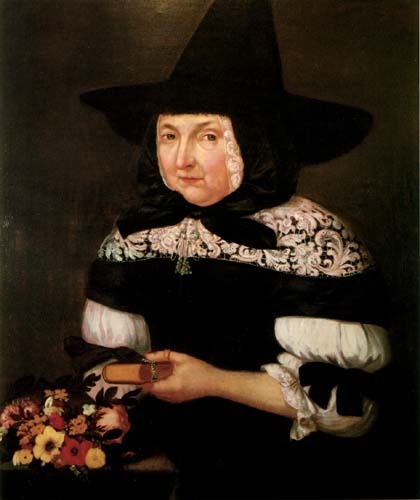 Possible Portrait of Mary Bliss Parsons
Possible Portrait of Mary Bliss Parsons
A description of the witchcraft trials of Mary Bliss Parsons by The University of Massachusetts states:
…soon after the Parsonses moved to Northampton, rumors of witchcraft began to circulate, implying that the family's success came at the expense of other families, and was the result of Mary's dealings with the devil. To head off the allegations, Joseph Parsons initiated a slander case in 1656, which he won. But eighteen years later, Mary was officially accused of and tried for witchcraft in 1674. She was eventually acquitted, but it seemed that the residents of Northampton, despite any court decrees, were convinced that Mary was a witch.
Back Cover:
My Enemy's Tears: The Witch of Northampton is based on the historical record of Mary Bliss Parsons and Sarah Lyman Bridgeman, whose lives trace the journey of English Separatists to the New World, the growth of the first settlements along the Connecticut River from Hartford to Northampton, the lives of women in 17th century New England, and the conflict of faith and reason that gave rise to American democracy.
 The Puritans in Hartford, which is at first little more than a campsite, find the wilderness a terrifying place full of warring natives, pestilences and floods destroying their crops, blazing comets, earthquakes and hurricanes--all portents of God's anger or a witch's meddling curse. Mary Bliss and Sarah Lyman grow up amid Puritan superstition and piety, busy with their household chores, one imagining a life different from her mother's and the other eager to marry and bear sons.
The Puritans in Hartford, which is at first little more than a campsite, find the wilderness a terrifying place full of warring natives, pestilences and floods destroying their crops, blazing comets, earthquakes and hurricanes--all portents of God's anger or a witch's meddling curse. Mary Bliss and Sarah Lyman grow up amid Puritan superstition and piety, busy with their household chores, one imagining a life different from her mother's and the other eager to marry and bear sons.
Mary Parsons and Sarah Bridgeman spend their married lives in the villages of Springfield and Northampton, where a youthful disagreement festers into a reason to hate and then to fear. As the years pass, one accuses the other of murder by witchcraft, which prompts a trial before the Court of Assistants in Boston--17 years before the infamous Salem Witch Trials.
In 17th century New England Mary Parsons and Sarah Bridgeman grow up in the wilds of uncivilized Hartford. When their friendship is torn apart by a disagreement, Sarah's bitterness festers. As the two women marry and begin families of their own, their lives drift father and father apart. Sarah's life is not easy and they struggle to survive. Mary on the other hand, is married to a successful man and they raise their family in comfort in a large home. Sarah's bitterness is feuled by jealousy over Mary's good fortune. When opportunity presents itself, Sarah accuses Mary of witchcraft.
I very much enjoyed this story, especially the way author, Karen Vorbeck Williams, was able to capture a true sense of the times. Her portrayal of Puritan religious beliefs and societal expectations was well researched and believable. From the start, she painted a vivid portrait of the hardships that settlers faced, including the numerous dangers resulting from disputes with the native people. The novel delves deep into the motivation of its characters. They are complex, believable, and easy to identify with.
Based on a true story, an ancestor of Ms. Williams, this is a fascinating recounting of early America and the struggles of women to survive and raise families amidst religious fears, witchcraft, the savage wilderness, and complex human relationships.
I LOVE COMMENTS










 Possible Portrait of Mary Bliss Parsons
Possible Portrait of Mary Bliss ParsonsA description of the witchcraft trials of Mary Bliss Parsons by The University of Massachusetts states:
…soon after the Parsonses moved to Northampton, rumors of witchcraft began to circulate, implying that the family's success came at the expense of other families, and was the result of Mary's dealings with the devil. To head off the allegations, Joseph Parsons initiated a slander case in 1656, which he won. But eighteen years later, Mary was officially accused of and tried for witchcraft in 1674. She was eventually acquitted, but it seemed that the residents of Northampton, despite any court decrees, were convinced that Mary was a witch.
Back Cover:
My Enemy's Tears: The Witch of Northampton is based on the historical record of Mary Bliss Parsons and Sarah Lyman Bridgeman, whose lives trace the journey of English Separatists to the New World, the growth of the first settlements along the Connecticut River from Hartford to Northampton, the lives of women in 17th century New England, and the conflict of faith and reason that gave rise to American democracy.
 The Puritans in Hartford, which is at first little more than a campsite, find the wilderness a terrifying place full of warring natives, pestilences and floods destroying their crops, blazing comets, earthquakes and hurricanes--all portents of God's anger or a witch's meddling curse. Mary Bliss and Sarah Lyman grow up amid Puritan superstition and piety, busy with their household chores, one imagining a life different from her mother's and the other eager to marry and bear sons.
The Puritans in Hartford, which is at first little more than a campsite, find the wilderness a terrifying place full of warring natives, pestilences and floods destroying their crops, blazing comets, earthquakes and hurricanes--all portents of God's anger or a witch's meddling curse. Mary Bliss and Sarah Lyman grow up amid Puritan superstition and piety, busy with their household chores, one imagining a life different from her mother's and the other eager to marry and bear sons.
Mary Parsons and Sarah Bridgeman spend their married lives in the villages of Springfield and Northampton, where a youthful disagreement festers into a reason to hate and then to fear. As the years pass, one accuses the other of murder by witchcraft, which prompts a trial before the Court of Assistants in Boston--17 years before the infamous Salem Witch Trials.
In 17th century New England Mary Parsons and Sarah Bridgeman grow up in the wilds of uncivilized Hartford. When their friendship is torn apart by a disagreement, Sarah's bitterness festers. As the two women marry and begin families of their own, their lives drift father and father apart. Sarah's life is not easy and they struggle to survive. Mary on the other hand, is married to a successful man and they raise their family in comfort in a large home. Sarah's bitterness is feuled by jealousy over Mary's good fortune. When opportunity presents itself, Sarah accuses Mary of witchcraft.
I very much enjoyed this story, especially the way author, Karen Vorbeck Williams, was able to capture a true sense of the times. Her portrayal of Puritan religious beliefs and societal expectations was well researched and believable. From the start, she painted a vivid portrait of the hardships that settlers faced, including the numerous dangers resulting from disputes with the native people. The novel delves deep into the motivation of its characters. They are complex, believable, and easy to identify with.
Based on a true story, an ancestor of Ms. Williams, this is a fascinating recounting of early America and the struggles of women to survive and raise families amidst religious fears, witchcraft, the savage wilderness, and complex human relationships.
I LOVE COMMENTS










Published on November 07, 2011 16:15
November 4, 2011
Hoyden of the Week - Pit Row Boss
Published on November 04, 2011 16:43
November 1, 2011
Asenath by Anna Patricio

Two Destinies...One Journey of Love. In a humble fishing village on the shores of the Nile lives Asenath, a fisherman's daughter who has everything she could want. Until her perfect world is shattered. When a warring jungle tribe ransacks the village and kidnaps her, separating her from her parents, she is forced to live as a slave. And she begins a journey that will culminate in the meeting of a handsome and kind steward named Joseph Like her, Joseph was taken away from his home, and it is in him that Asenath comes to find solace...and love. But just as they are beginning to form a bond, Joseph is betrayed by his master's wife and thrown into prison. Is Asenath doomed to a lifetime of losing everything and everyone she loves?
New author, Anna Patricio has written an engaging Biblical biographical novel of high adventure and passionate love amid the turbulent world of Ancient Egypt. Asenath is the biographical story about the life of Asenath, the wife of Joseph of the coat of many colours.
Asenath's real name was Kiya and she was born to a happy family who lived on the banks of the Nile. One day, her village is invaded, her parents killed, and she is separated from her siblings. Kiya survives but is captured and forced into slavery. When Egyptians rescue her, she is brought to the temple of Atum-Re and begins training as a priestess. It is then that she meets Joseph, a most handsome, desirable young man, but a man considered beneath her because of his status as a Hebrew slave. When she marries him, her life is pushed into turmoil and catapults the novel into wonderful scenes filled with tension and conflict.
Written in first person narrative in Asenath's voice, it is a compelling story, nicely researched, and well written. For a first novel, it is an impressive effort. The novel is geared toward the Young Adult market, but I recommend it for adults too. On rare occasions, the author slipped into modern vernacular, which pulled me from the story a bit – something that should have been caught and corrected by the editor. However, as I said, this didn't happen often and it certainly did not keep me from enjoying the story.
All in all, this was a terrific debut novel and a compelling story, recommended for anyone who loves to be swept into fascinating, ancient eras. Anna Patricio has great promise and I look forward to following her career.
I LOVE COMMENTS










Published on November 01, 2011 13:57
October 28, 2011
Women - Keep your Virtue!
Published on October 28, 2011 17:04





